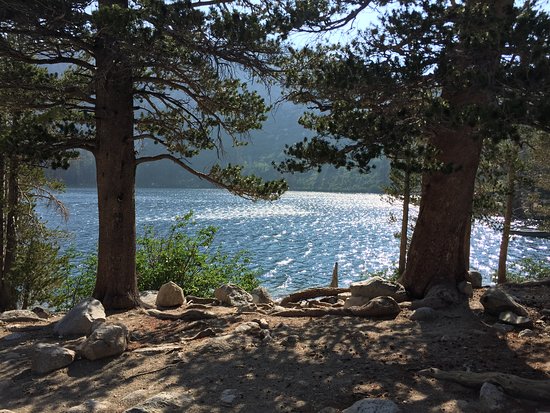Page 5 of 10
Re: 4th Matthew Greene Search 9/4-9/8/19
Posted: Tue Nov 05, 2019 10:07 am
by sekihiker
Yep. Willows.
Re: 4th Matthew Greene Search 9/4-9/8/19
Posted: Wed Nov 06, 2019 7:52 pm
by Harlen
Willows eh? That's a pretty far cry from the Heath family, but I didn't note the "chest high" part. Mightn't there be some manzanita up there? That would be more reminiscent of the Mountain laurel narkj speaks of? Ian.
Re: 4th Matthew Greene Search 9/4-9/8/19
Posted: Tue Feb 04, 2020 2:15 pm
by narkj
Hey all, it's Jason, the journalist. I haven't forgotten about you all. I just returned from a reporting trip to Poland, for the 75th anniversary of the liberation of Auschwitz. Heavy stuff.
I'm hoping to put this story to bed soon.
Wondering about some more vegetation/animal questions, connected to this story for me. In 2017, when I came to Mammoth and wound up spending most of the time alone, I did not feel comfortable going up near the minarets and Ritter/Banner area alone, so I did smaller hikes around town.
One of them was McLeod Lake, near Mammoth Mountain. When I was there, there was a plethora of small flies and bees, millions of them, all buzzing around the bushes and fauna by the lake. More bees and flies than I'd ever seen before? Anybody have an idea about what the fauna could be, the specific types of bugs?
This is not my pic, but those bushes by the water, below the trees, were the ones filled with bees and flies, or perhaps they were flies that resemble bees.

Re: 4th Matthew Greene Search 9/4-9/8/19
Posted: Wed Feb 05, 2020 8:43 pm
by grampy
narkj -
Just a guess, but the “bees” could have been Yellowjackets (sometimes nicknamed “meat bees”, due to their affinity for meat and carrion). These are actually a type of wasp.
> see this article:
https://www.sfchronicle.com/outdoors/ar ... 229599.php
Not enough info to identify the “small flies” ... and I’m certainly no entomologist anyway.
Re: 4th Matthew Greene Search 9/4-9/8/19
Posted: Thu Feb 06, 2020 1:55 pm
by narkj
Thanks Grampy, I don't think they were yellow jackets. I know yellow jackets well from the East Coast. I would say they were more fly than bee.
Re: 4th Matthew Greene Search 9/4-9/8/19
Posted: Sat Feb 08, 2020 11:59 am
by ERIC
narkj wrote: ↑Thu Feb 06, 2020 1:55 pm
Thanks Grampy, I don't think they were yellow jackets. I know yellow jackets well from the East Coast. I would say they were more fly than bee.
Hey
@narkj -
Maybe, maybe not. We have half a dozen species native to California you might not be familiar with. Although, I do think what you witnessed were flies and perhaps bees too.
Looks to me like Sierra Willow (90% sure from photos posted to your other thread), and if flies, they are likely
hoverflies.
You'll sometimes find
these cute little guys feeding on them. They have a joyful song that's easy to spot near water in the Sierra.
ERIC
Re: 4th Matthew Greene Search 9/4-9/8/19
Posted: Tue Feb 11, 2020 1:57 pm
by narkj
Hoverflie might be it. I was up there early and it was cold, and they may have been getting warm. I just know there were a lot, swarms. Thanks.
Re: 4th Matthew Greene Search 9/4-9/8/19
Posted: Tue Feb 11, 2020 2:05 pm
by narkj
They definitely looked like hoverflies. Are they native to that area?
Re: 4th Matthew Greene Search 9/4-9/8/19
Posted: Tue Feb 11, 2020 6:30 pm
by ERIC
Hard to say. There are I don't know many species of hoverflies (a lot) and they're found all over the US. Field guide shows the range of the species I linked to as mostly Eastern Sierra including where you were. I've seen hoverflies on the Western Slope as well. They can take on many different looks, even within the same species. But I think most (if not all) are pollinators, so it stands to reason to me that they would be swarming Willow alongside bees. In summary, I think you're safe generically calling them hoverflies in your article, if that's what you're concerned about.
Re: 4th Matthew Greene Search 9/4-9/8/19
Posted: Thu Feb 13, 2020 5:09 pm
by Dave_Ayers
There are multiple species each of Bee Flys, Hover Flys, Soldier Flys, Saw Flys, plus many more species of flies and bees common in the High Sierra. If you want to try to pin them down, you might start with a Field Guide that has pictures or illustrations such as the one by John Muir Laws.
